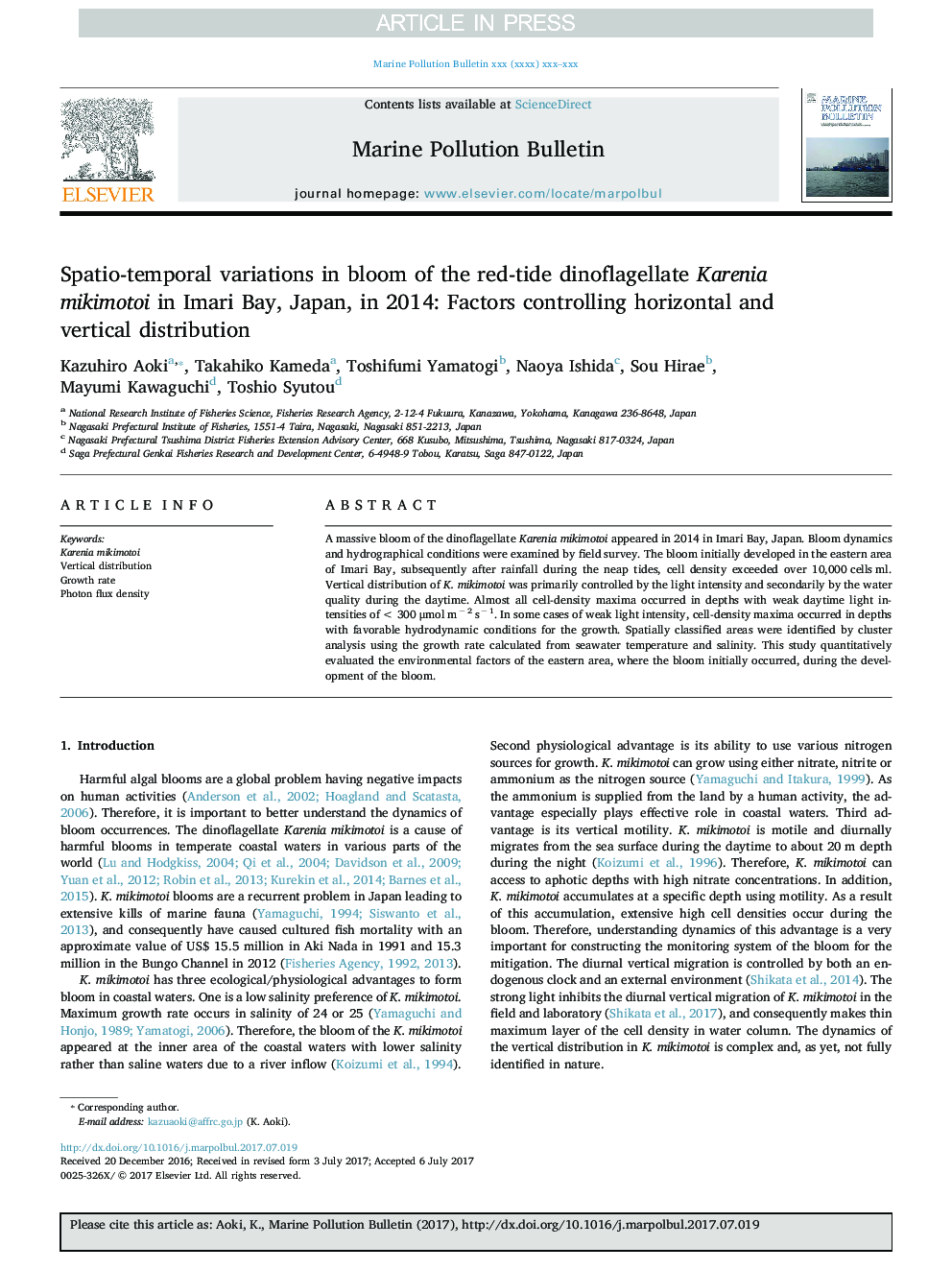| Article ID | Journal | Published Year | Pages | File Type |
|---|---|---|---|---|
| 8872161 | Marine Pollution Bulletin | 2017 | 9 Pages |
Abstract
A massive bloom of the dinoflagellate Karenia mikimotoi appeared in 2014 in Imari Bay, Japan. Bloom dynamics and hydrographical conditions were examined by field survey. The bloom initially developed in the eastern area of Imari Bay, subsequently after rainfall during the neap tides, cell density exceeded over 10,000 cells ml. Vertical distribution of K. mikimotoi was primarily controlled by the light intensity and secondarily by the water quality during the daytime. Almost all cell-density maxima occurred in depths with weak daytime light intensities of < 300 μmol mâ 2 sâ 1. In some cases of weak light intensity, cell-density maxima occurred in depths with favorable hydrodynamic conditions for the growth. Spatially classified areas were identified by cluster analysis using the growth rate calculated from seawater temperature and salinity. This study quantitatively evaluated the environmental factors of the eastern area, where the bloom initially occurred, during the development of the bloom.
Related Topics
Physical Sciences and Engineering
Earth and Planetary Sciences
Oceanography
Authors
Kazuhiro Aoki, Takahiko Kameda, Toshifumi Yamatogi, Naoya Ishida, Sou Hirae, Mayumi Kawaguchi, Toshio Syutou,
